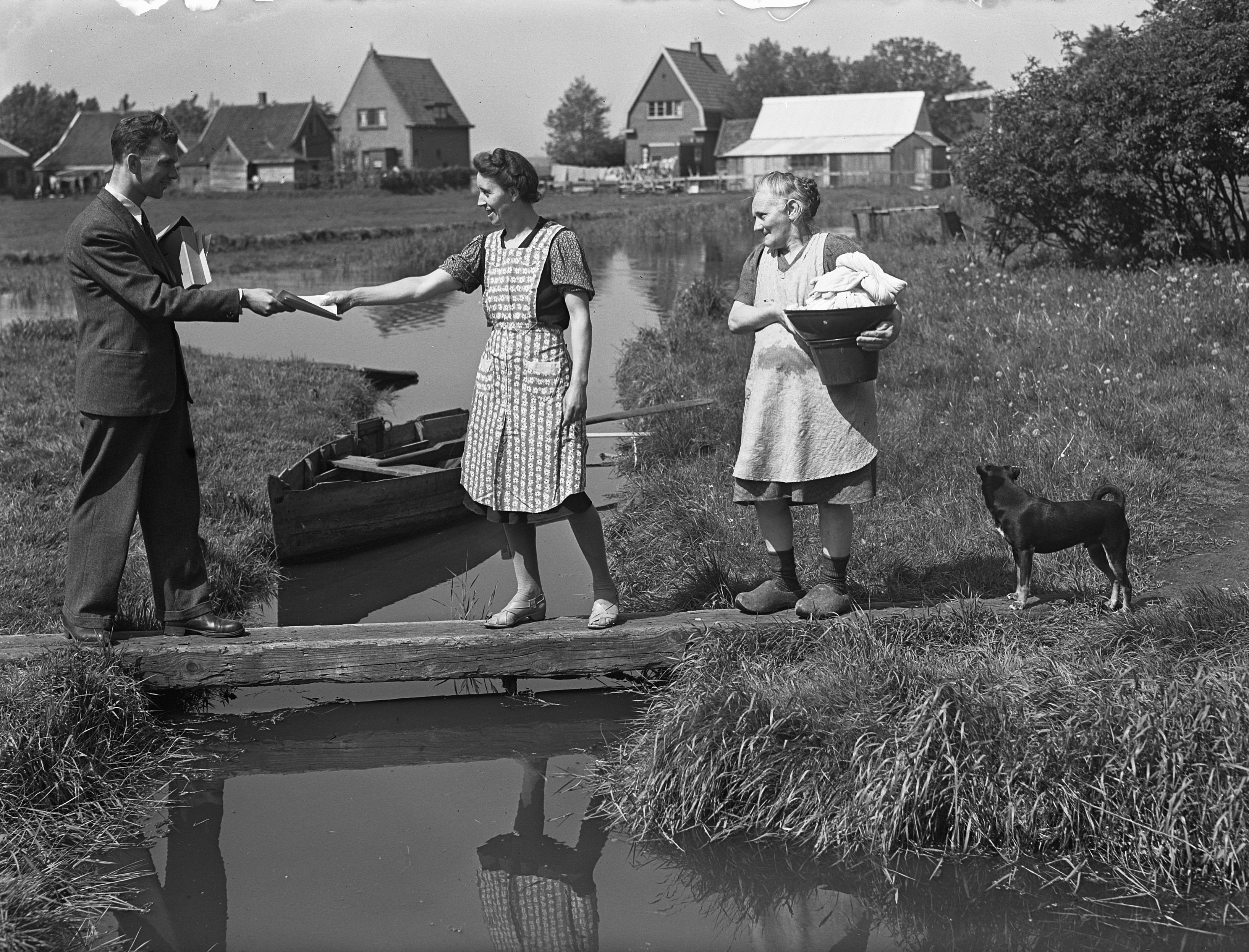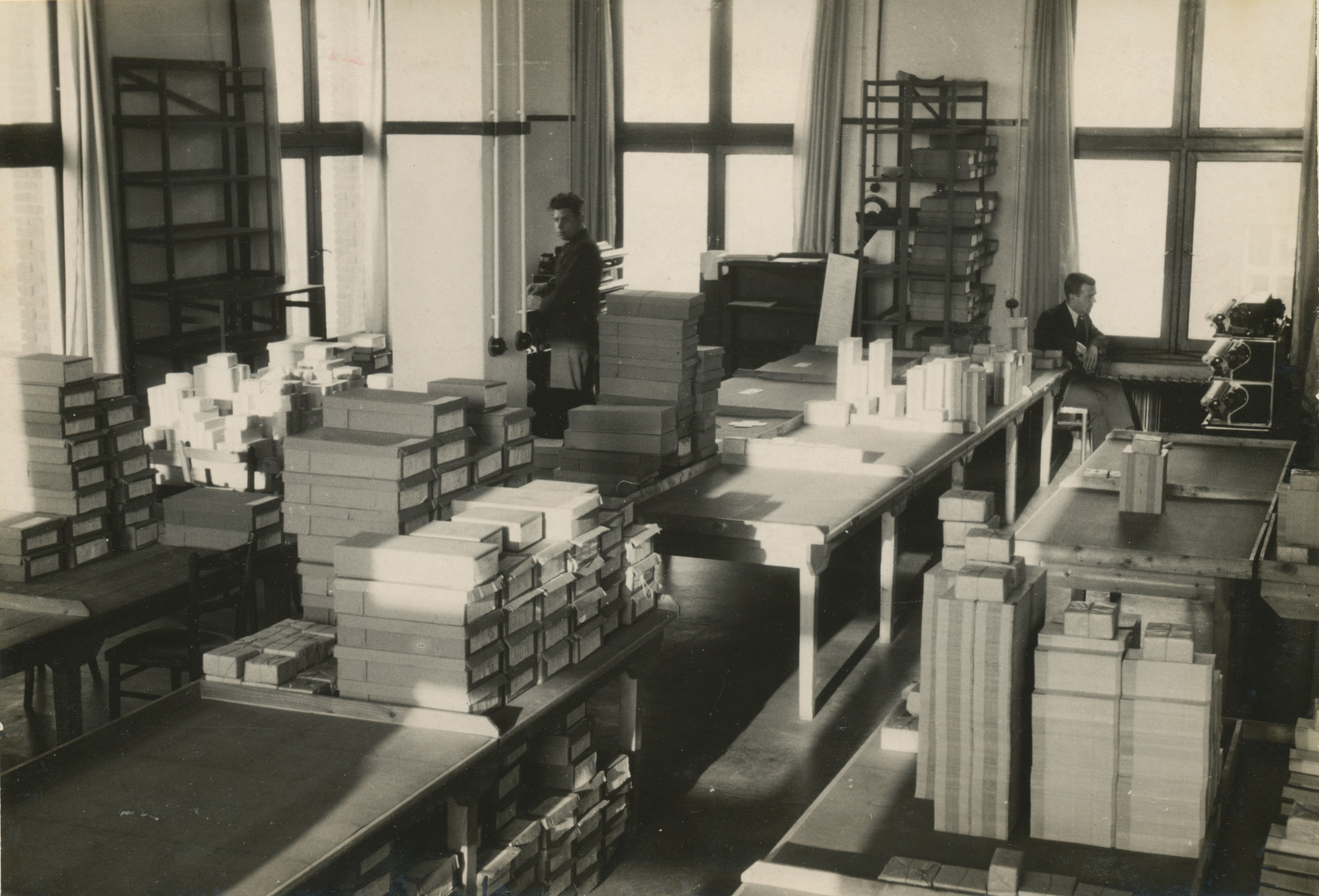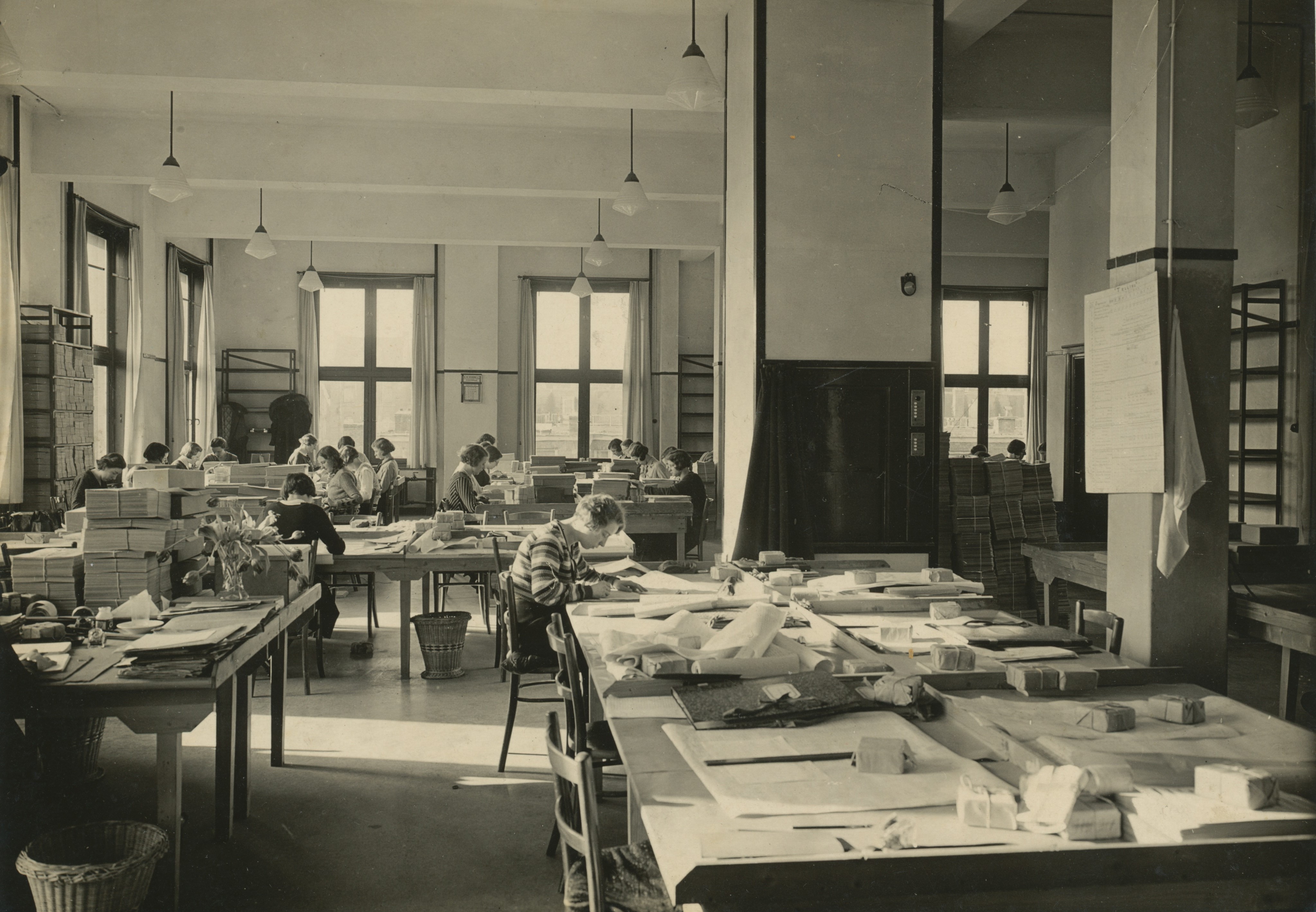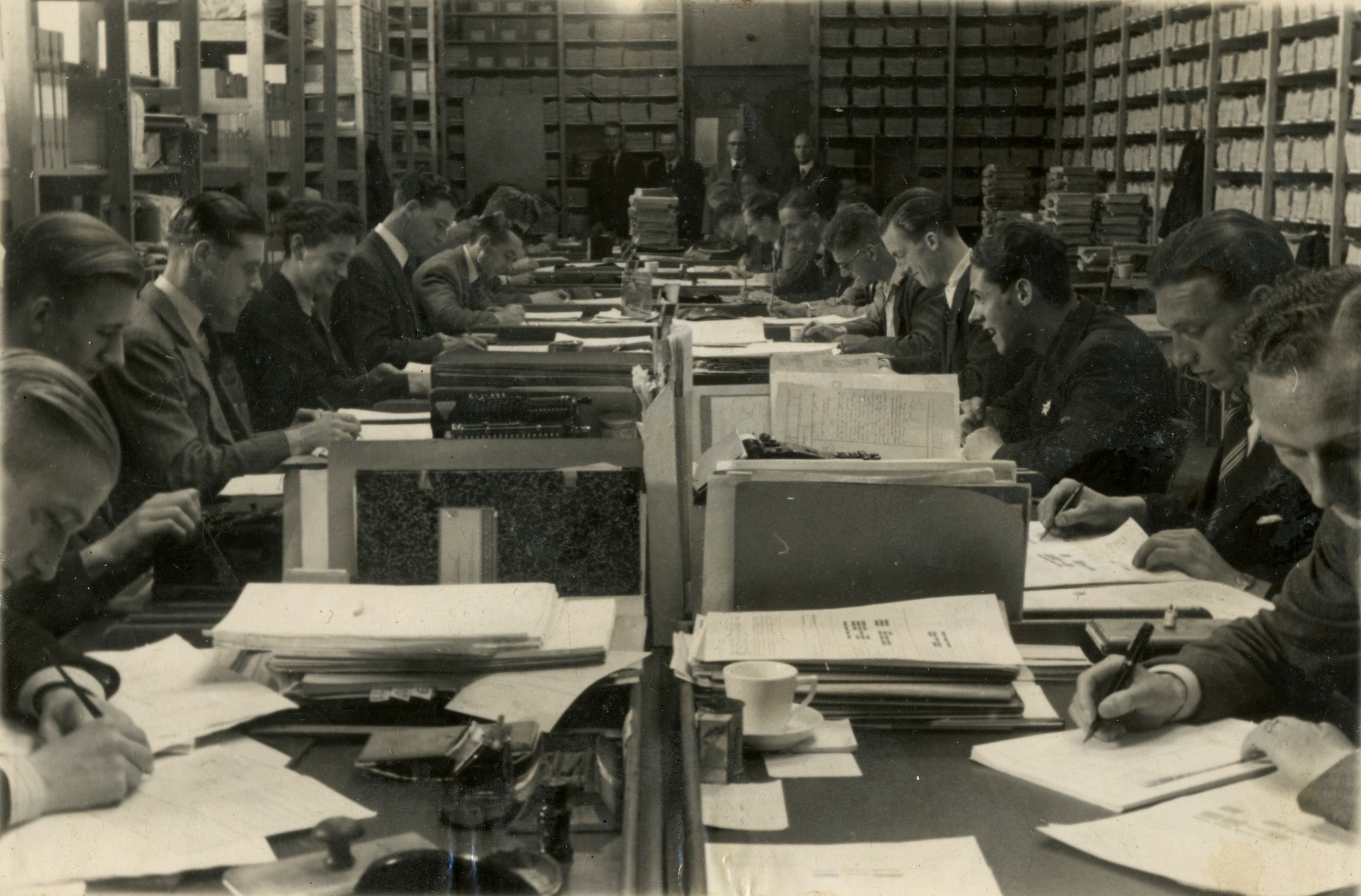1947
By far the biggest problem when conducting a census is keeping all the data confidential. The 1947 census resolved this issue by updating the forms people had to fill in. A strip at the top of the form contained the respondent’s surname, first name, other initials, date of birth and address, and there were different coloured forms for men and for women. This seems to have provided enough details to check whether everyone had filled in the form. The strip was cut off once the data reached the office, so that the form could be processed anonymously. We still have these strips (see below), and some of them are kept in the Meertens Institute in Amsterdam.
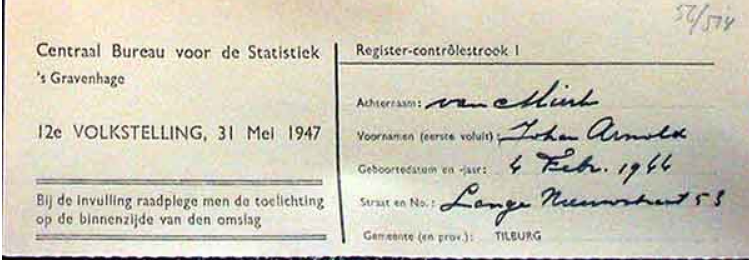
Flexible and agile
This modernised organisation was the achievement of the new Director General, Dr P. Idenburg, who succeeded H. Methorst in 1939. At the end of the war, Idenburg commissioned E. Hijmans’ organisation agency to evaluate CBS’ procedures. He believed that CBS should pay attention to social developments, and that the organisation should adapt to new needs ‘with flexibility and agility’. The organisation had to increase its speed and efficiency,
so Hijmans conducted a thorough reorganisation. All the processes involved in handling statistical material were painstakingly regulated using an ‘order envelope’ that set out the schedule for the relevant machines, the tasks to be performed and how much time was allocated to each of those tasks. The machinery was also modernised with the introduction of new sorting, tabulating, copying and total card machines, together with mechanical ‘collators’ that organised the sorted cards into stacks. The manual punching and calculating machines were replaced with electric machinery.
No more joy
The effects of the reorganisation were not all positive: 129 people were made redundant in 1948, and even the people who kept their jobs were far from enthusiastic. Under the new system, the work was ‘so monotonous, and workers have so little opportunity to put anything of themselves into the work, that we can no longer expect them to identify with the work and the people can no longer take any joy from their work.’
Census lessons
The census activities underwent extensive updates, including a propaganda campaign. The Netherlands Foundation for Statistics, CBS’ commercial sister organisation, designed a poster that read: ‘We need to know how strong we are. Do your part to ensure the success of the Census on Saturday 31 May 1947’. The Foundation hired a booth at the Jaarbeurs Conference Centre in Utrecht to tell people about the census. In other campaigns, CBS invited the national press to come and see the impressive machinery, a public information film was added to the news bulletin in cinemas, and the census was discussed on at least 30 radio programmes. On the day of the census, Saturday 31 May, the famous radio play actor and radio columnist Koos Koen gave census lessons on both of the active radio stations. Koen had made a name for himself between 1946 and 1958 with his programme De gewone man zegt er het zijne van (The common man speaks his mind).
But there was no money for human surveyors, so it was hard to find workers. Municipalities had the option to encourage applicants by offering surveyors ‘an extra share of ration cards for sweets or tobacco’, and rural municipalities advertised a permit to buy new bicycle tyres, but still there was little enthusiasm and most of the surveying was done by municipal employees.
Highlights
The processing method was ‘mark sensing’: employees drew lines to highlight the items that appeared on the punch cards, and the lines were then read by a machine called an optical reader. In pioneering this method, CBS achieved yet another European first. Hundreds of people were drafted in to process the data, a quarter of whom were women. Because it was so important for this staff to concentrate on their work, their instructions specified: ‘No unnecessary walking around. No whistling, singing or talking whilst working. And if there is an error in the material, however insignificant, do not tug on the section chief’s coat, but wait until he comes near on his rounds.’
Forty thousand transparencies
The results had to be available quickly. CBS could not wait to publish the tables in paper format, so they were recorded as transparencies on A4 sheets of tracing paper. The required sheets could be ordered as soon as the transparencies were ready. The twelfth census generated a total of 40,000 transparencies, including 672 with topographic sheets. Each municipality received its own standard book for the first time, and this was also the first census to produce topographical prints of the districts and neighbourhoods.
Sixteen degrees
Due to housing problems, the census data were processed in The Hague as well as in Amsterdam and Rotterdam. The working conditions in The Hague could best be described as ‘spartan’. In October 1947, in the midst of fuel shortages, the minister decided that the heating in all government buildings should not be set higher than 15.7°C. The situation was even worse in rooms that were not regularly used, as they were not allowed to exceed 10°C. And no complaints were allowed: ‘As long as the temperature does not fall below these standards, there is no use contacting the department on this matter.’ People were even forbidden to bring in an extra heater.
Housing shortage
There was an acute housing crisis at that time. Many homes had been destroyed in the war and there had been very little construction since 1940. To add to the problem, a sudden increase in the number of marriages was putting pressure on available housing. Estimates of the housing shortage ranged from 271,000 to 357,000 homes, representing somewhere between 13% and 17% of the housing stock. One in six dwellings housed two or more families.
